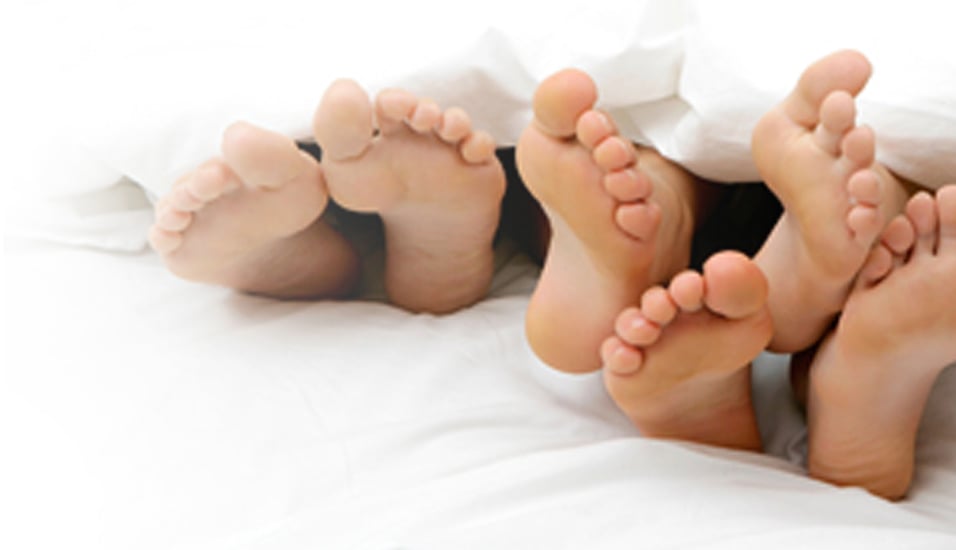 With the greater emphasis on health and fitness, and the search for the elusive secret to youth and longevity, many people are placing more importance on exercise. While there are those who are on the ball with their regime, there are many more who want to start but are clueless as to how to get themselves into shape. Choosing the type of sport you would like to participate in is just half the battle, there is also a myriad of training equipment that can make the selection quite overwhelming. I have decided to start running for fitness, what do I need to do? First and foremost, decide where you are going to run. Will it be on the road or off-road? Will the terrain be tarmac or uneven jungle floor? Will you be running in riverbeds and in rainy weather? Different surfaces and weather conditions will determine the type of shoes you will be wearing. It will narrow down your choices as to whether to get the weatherproof trainer or not, because we all know going about in squishy wet shoes and socks is not fun. The running surface will also give you an indication as to the shock absorbency and the grip of the shoe required. If I train on a treadmill in a gym, why does my best time differ in the actual marathon? Running in an air-conditioned gym on a treadmill, in no way replicates the conditions of humid Malaysian weather. When training for a race, try as much as possible to replicate the race conditions when training to allow your body to become acclimatized. Also, marathon training requires proper training plans, which can be anything from 16 weeks to a year depending on fitness level, age, health, experience, adaptation response, life schedule and mileage. What about football, tennis, basketball or badminton? Can I use the same shoes? Each sport that you decide to participate in requires its own set of equipment, shoes notwithstanding. Please select the appropriate type of shoes and make sure they are the right fit for the activity. Football will require football boots, and likewise, you can’t play tennis with cleats on your feet. By selecting the correct shoes, you can minimize the risk of injury sustained during sports. Running shoes are more versatile, and this allows you to use them for a wider spectrum of activity such as walking and hiking. How often should I change my shoes? There is no set value as to how much mileage we can get out of our shoes. For children, they grow out of those quite quickly, thus they need to be refitted every 4-6 months. Adults who are moderately active (150 minutes of brisk walking a week) can probably change their shoes every 6-12 months, while those who run regularly should look at changing them every 6 months. In terms of numbers, this will be approximately every 800-1200km.
With the greater emphasis on health and fitness, and the search for the elusive secret to youth and longevity, many people are placing more importance on exercise. While there are those who are on the ball with their regime, there are many more who want to start but are clueless as to how to get themselves into shape. Choosing the type of sport you would like to participate in is just half the battle, there is also a myriad of training equipment that can make the selection quite overwhelming. I have decided to start running for fitness, what do I need to do? First and foremost, decide where you are going to run. Will it be on the road or off-road? Will the terrain be tarmac or uneven jungle floor? Will you be running in riverbeds and in rainy weather? Different surfaces and weather conditions will determine the type of shoes you will be wearing. It will narrow down your choices as to whether to get the weatherproof trainer or not, because we all know going about in squishy wet shoes and socks is not fun. The running surface will also give you an indication as to the shock absorbency and the grip of the shoe required. If I train on a treadmill in a gym, why does my best time differ in the actual marathon? Running in an air-conditioned gym on a treadmill, in no way replicates the conditions of humid Malaysian weather. When training for a race, try as much as possible to replicate the race conditions when training to allow your body to become acclimatized. Also, marathon training requires proper training plans, which can be anything from 16 weeks to a year depending on fitness level, age, health, experience, adaptation response, life schedule and mileage. What about football, tennis, basketball or badminton? Can I use the same shoes? Each sport that you decide to participate in requires its own set of equipment, shoes notwithstanding. Please select the appropriate type of shoes and make sure they are the right fit for the activity. Football will require football boots, and likewise, you can’t play tennis with cleats on your feet. By selecting the correct shoes, you can minimize the risk of injury sustained during sports. Running shoes are more versatile, and this allows you to use them for a wider spectrum of activity such as walking and hiking. How often should I change my shoes? There is no set value as to how much mileage we can get out of our shoes. For children, they grow out of those quite quickly, thus they need to be refitted every 4-6 months. Adults who are moderately active (150 minutes of brisk walking a week) can probably change their shoes every 6-12 months, while those who run regularly should look at changing them every 6 months. In terms of numbers, this will be approximately every 800-1200km.
The main thing is to notice what your body tells you. When your shoes wear down, the outsole will go balder and lose grip, the midsole shoe will lose its rigidity and start to break down. You will start experiencing aches, pains and muscle strains in your feet and lower limbs. This will tell you that your shoes are no longer working as well as they should be, and you should look for a replacement shoe to break in and transit into.
A heavier individual with high intensity workout regime will wear their shoes faster than a light-weight individual on moderate exercise. Even so, shoes that have been left unattended for years in the shoe cabinet can lose its integrity and will need to be replaced before resuming activity. Why do I still get achy pains at the front of my legs when I wear my new sport shoes when running? Those pains are called shin splints. Check that your shoes are the correct size. A thumb’s width is a good indicator of shoe length to the longest foot. Also check the width of the shoe corresponds to the width of the feet. Always buy the shoe that fits the bigger foot. Remember to fasten the laces well. Angle the feet at 45 degrees and tie the laces firmly from toe to ankle. You should not be able to remove your foot out of the shoe without releasing the laces. Doing all of the above can eliminate most complaints of shin splints. How do I avoid blisters? Blisters tells you that you have too much movement inside your shoe. Fasten your shoe laces well, to reduce that. Also, wearing two layers of socks will also reduce the incidence. Some people take preventative measure of applying a protective spray on the areas prone to blistering to pre-empt the condition. If there are blisters, please keep them covered and dry. There is no need to drain them. Which is better? Barefoot running? Or running with shoes? There is much debate about barefoot running. While there are supporters of both camps strongly advocating their chosen method, it is not set in stone. Barefoot running will give better contact for the surface you are running on, and allows muscles to pick up subtle changes in terrain that you traditionally won’t be able to feel. It makes for more complex muscle training. However, this is not for everyone.
Many Asian people have significant pronation of their feet. This can have serious consequences in hip, knee and ankle injury as there is a huge impact when running. Conventional running shoes provides more cushioning and shock absorbency and give better arch support when running, especially on hard unforgiving city terrain. The running gait is also very different between the two, and will require conscious correction to run efficiently.
When trying out a new activity, please give yourself time and room for improvement. There is no fast-track method in improving your racing physique, but it requires a well-planned training programme.
This article is contributed by Stella Chai, Podiatrist, IMU Healthcare









